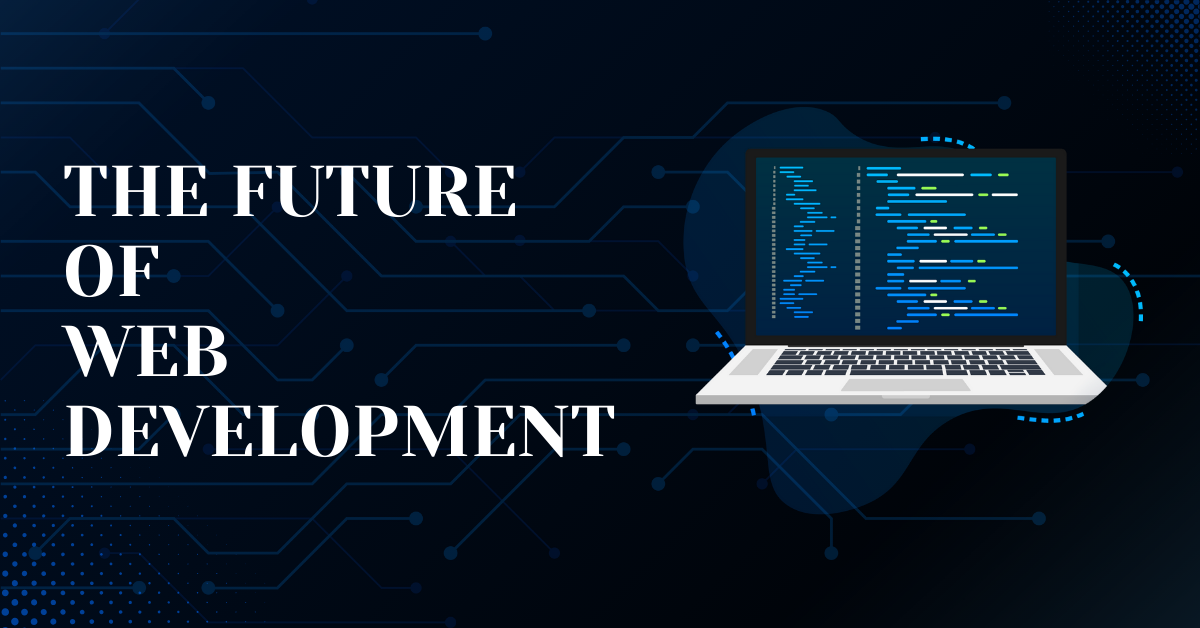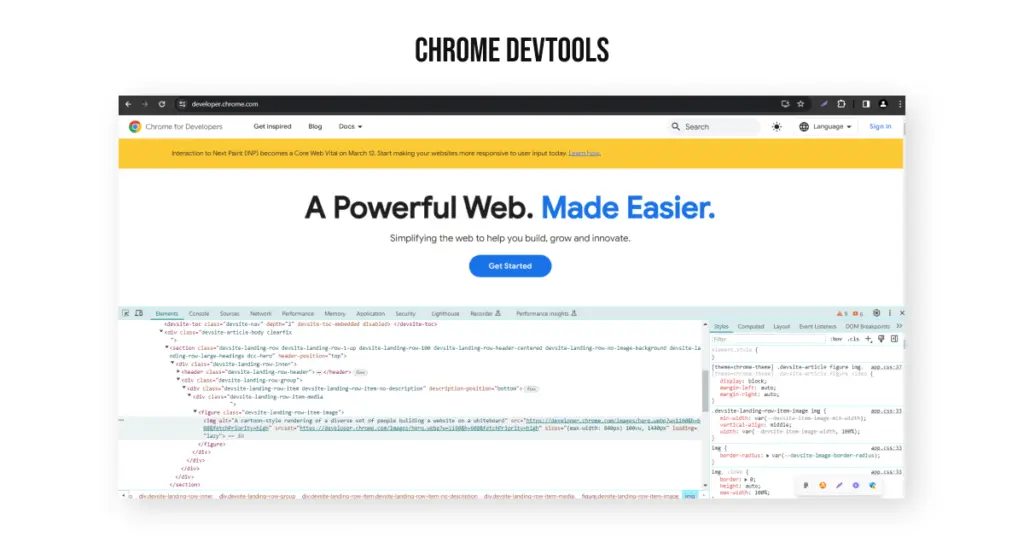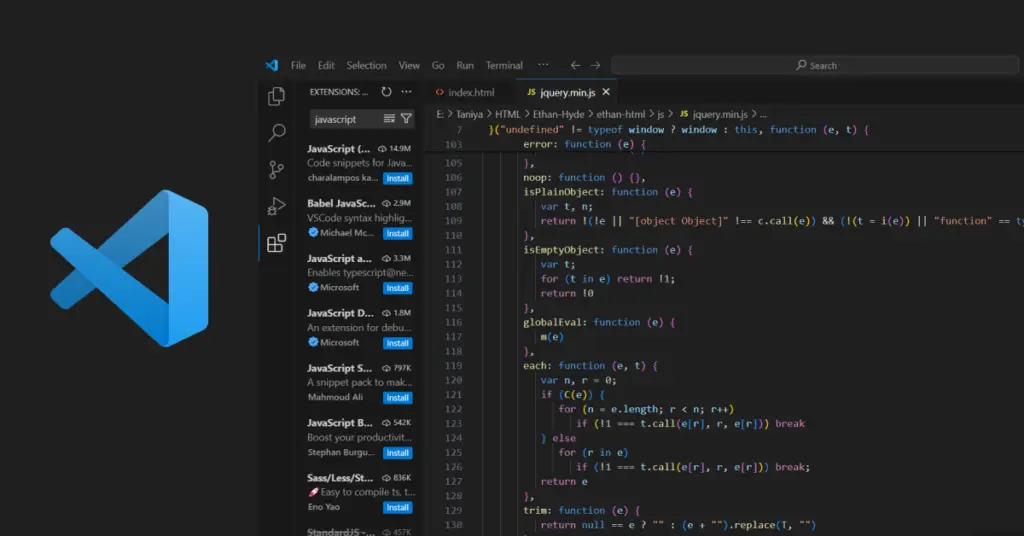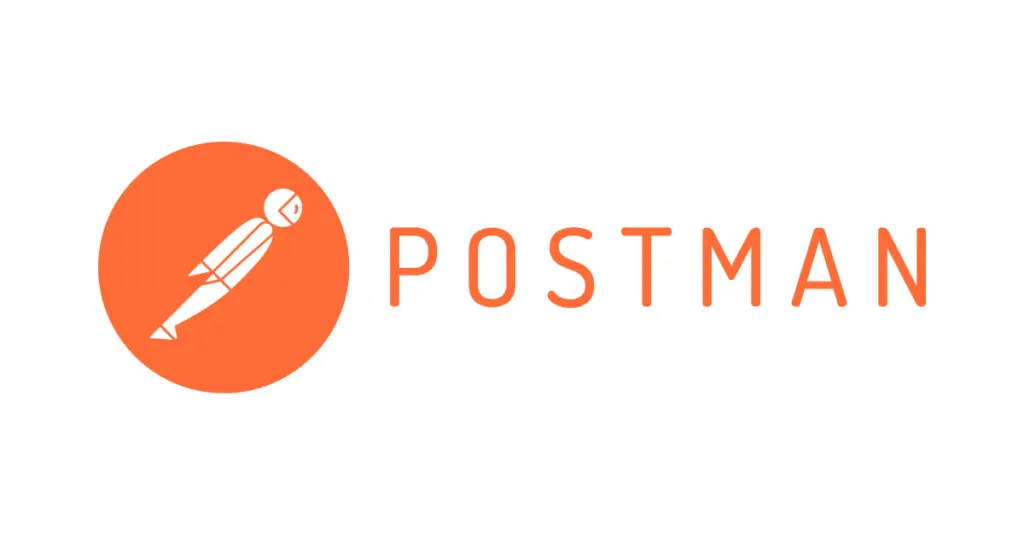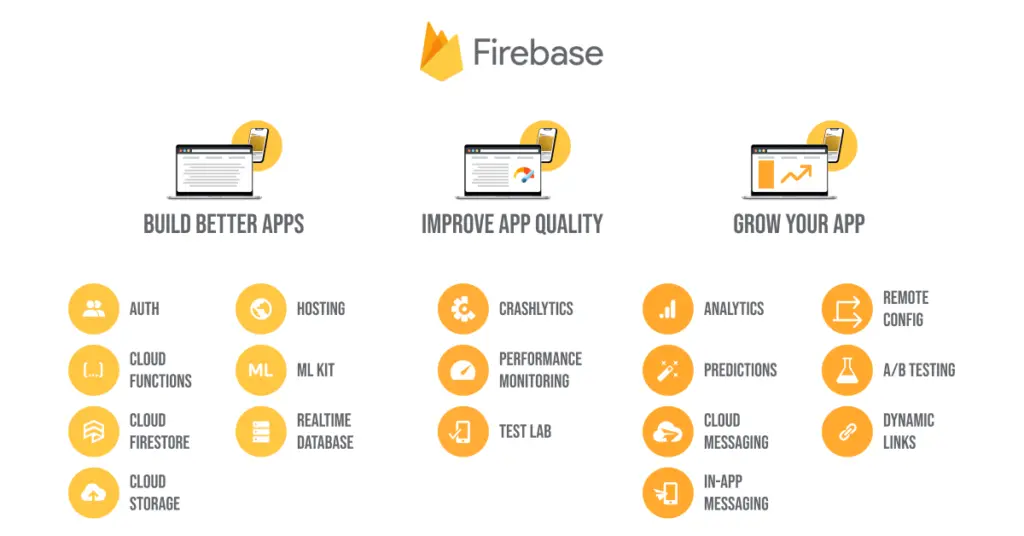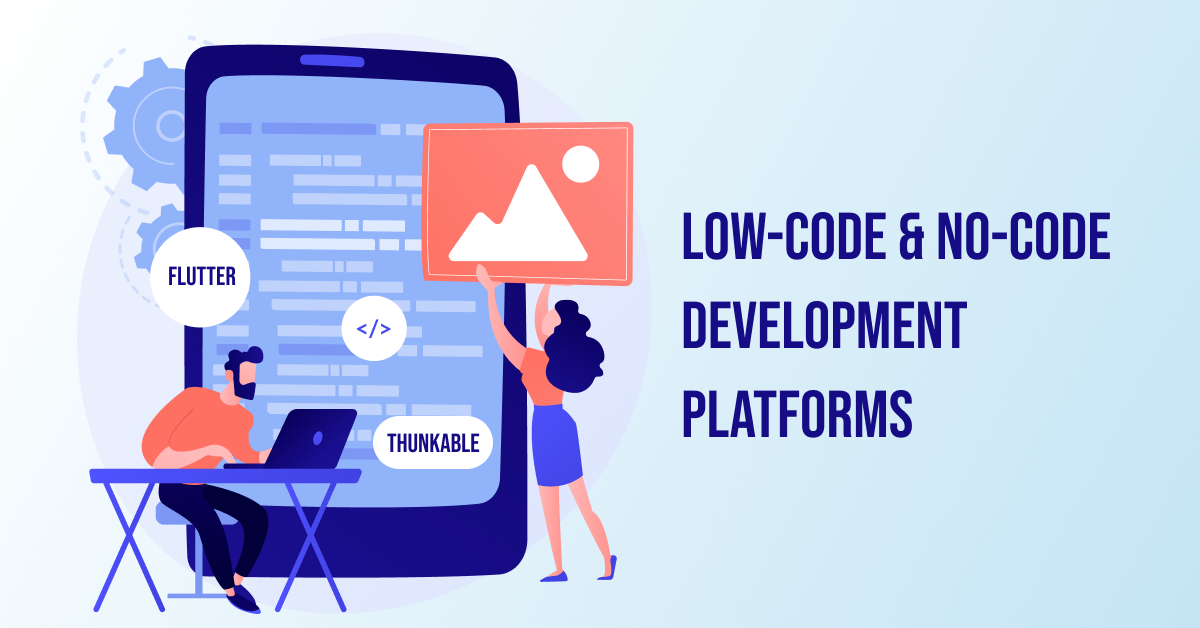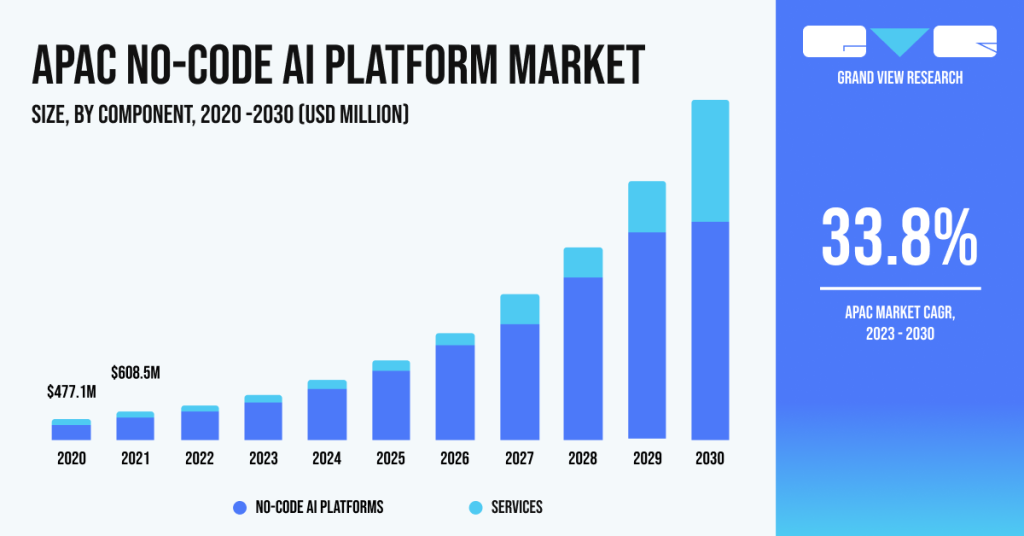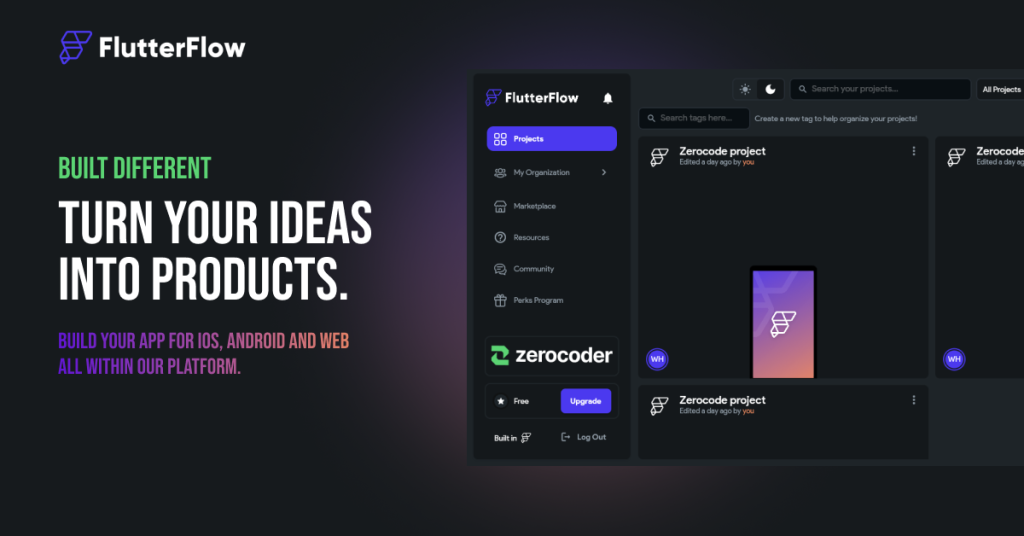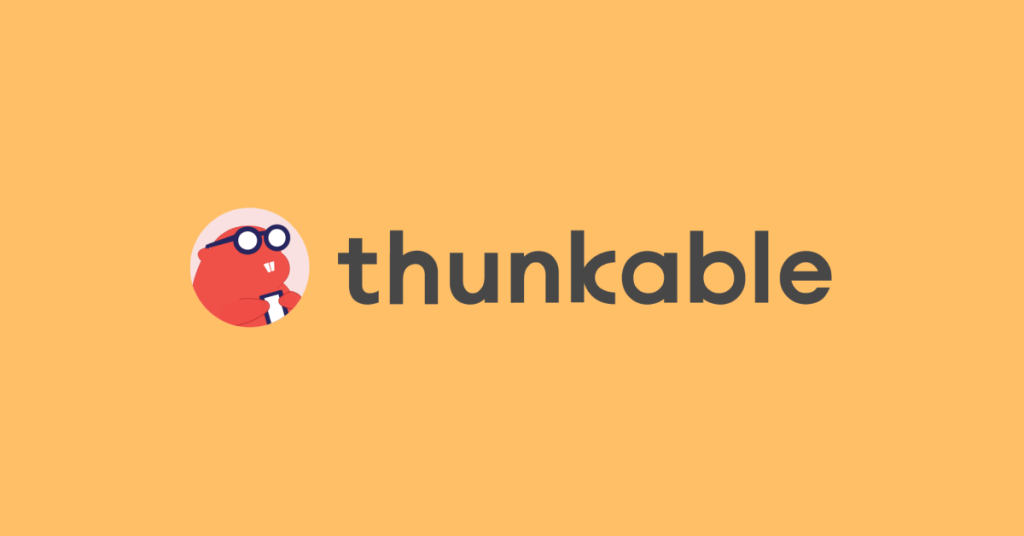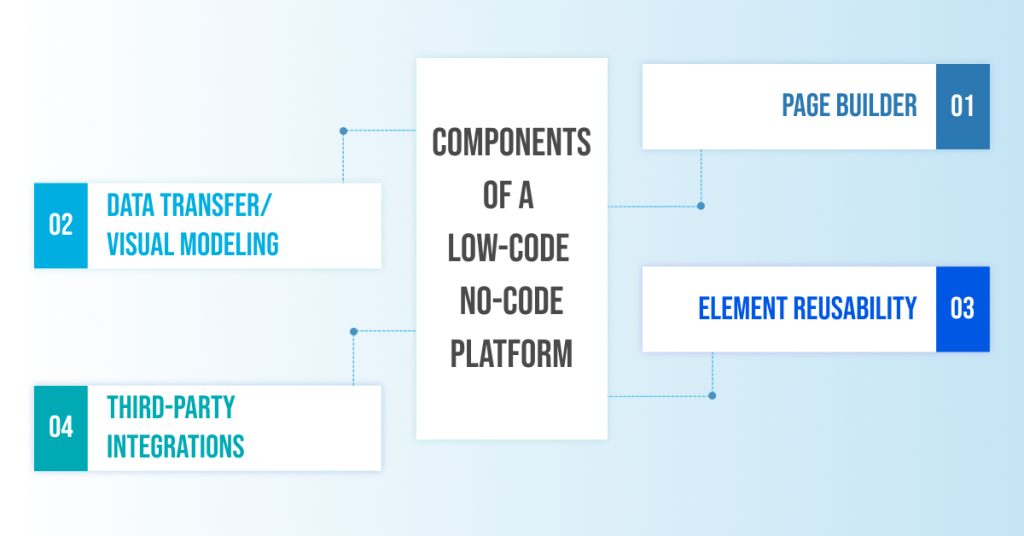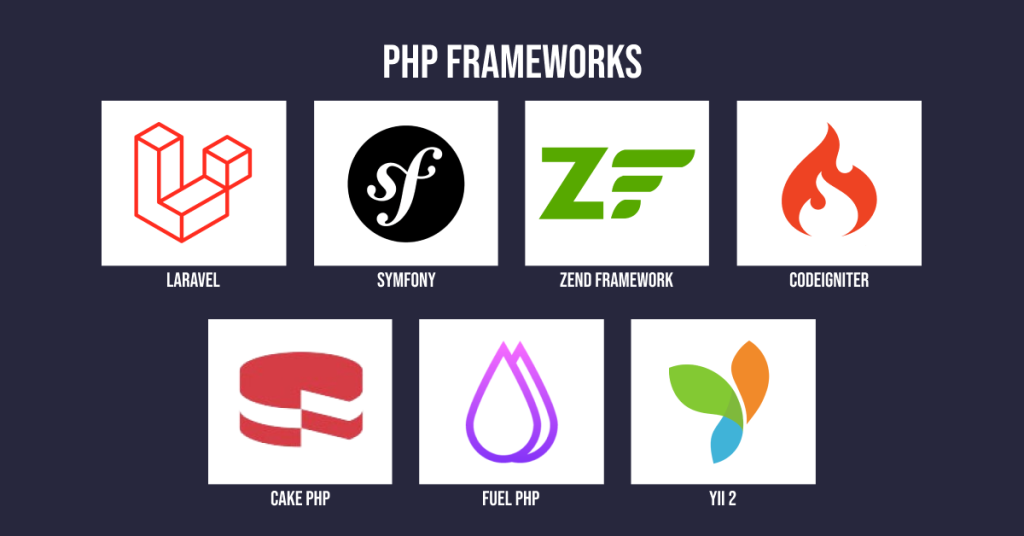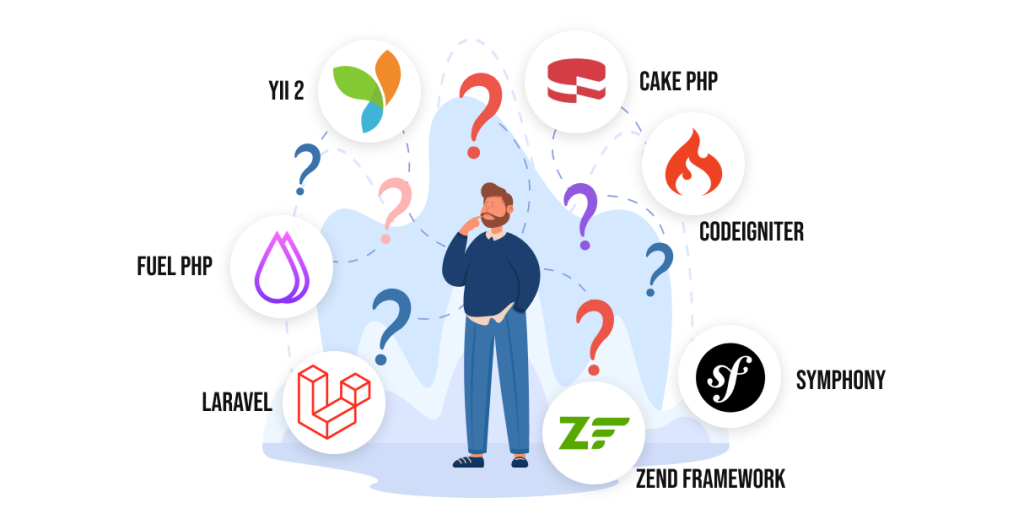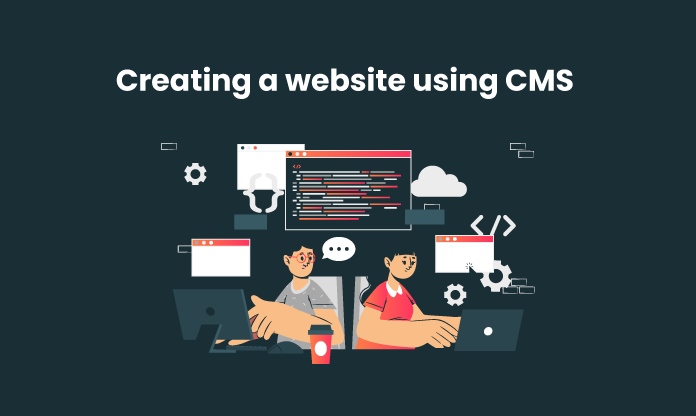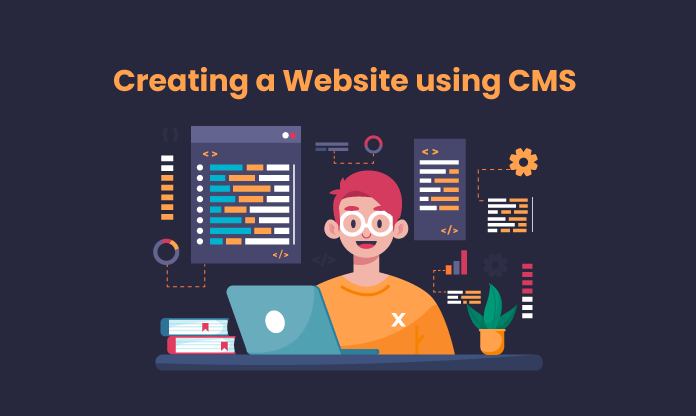As we approach 2025, the world of web development is geared up for some game-changing trends. The tech world always stands, so new technology and tools are emerging to change how websites look, feel, and perform. Between 2010 and early 2020, the web development industry grew by 3-5% annually. By 2023, the market value reached over $50 billion, with an annual growth rate of 6%. Looking ahead, the industry is expected to grow at an annual rate of up to 10% by 2030. As technology continues to reach new heights, some web development trends in 2025 are set to diversify our online experience. Staying updated with these trends is no longer optional. Now, it has become a necessity for developers, designers, and businesses to keep these upcoming trends on their radar.
The global web development market is expected to grow at a compound annual growth rate (CAGR) of 8.03% with a market share of USD 89013.17 million by 2027.
Web development has seen a massive transformation over the past decade. This all changed with the introduction of AI, mobile responsive designs, and user-centric interfaces. This will speed up by 2025 as revolutionary technologies are reshaping how websites and applications are built, hosted, and optimized. From security mechanisms to UI, everything is becoming more dynamic and user-friendly. More jobs are being created in new sectors of web development that can take advantage of these changes.
Keeping up with the latest web development trends in 2025 is indispensable. These shifts may come when you least expect them, and failing to acknowledge these trends can lead to missing out or trailing behind the curve. In 2025, web development trends are more than trends or predictions — they represent the building blocks for next-generation web experiences. In this blog, we will discuss the future of web development in 2025. We’ll dive into the most impactful and emerging trends and learn how they can keep you ahead in this changing industry.
Top Web Development Trends for 2025
1. AI-Driven Development
The advent of AI-driven development has changed web development trends in 2025, allowing it to emerge as a more responsive, adaptive software process. AI is now present in all four corners of contemporary web development and has simplified processes that used to be extremely laborious. In the fast-moving world of technology, developers process AI-powered tools quickly for efficient code generation, design specification help, and better user experience.
AI-powered tools like GitHub Copilot and CodeWhisperer help developers with repetitive code, find errors and even suggest further optimizations, all of which enable developers to spend more time working on higher-level problem-solving capabilities.
Leveraging AI-driven web development tools, developers can write impeccable code in a fraction of time. Automated code generation allows developers to work at a higher level than the specific topic of writing, while AI can handle monotonous coding. This includes AI support by aiding designers in creating aesthetically pleasing layouts based on information from user preferences and behavioral data. It saves a lot of time, making development cycles faster than ever.
When you look beyond the code and design side of it, then AI pushes UX to a whole new level. This allows incredibly individualized, real-time interactions based on ever-changing user behaviors. For example, AI can recommend related products or content, making that experience more personalized.
AI has many significant advantages in web development in 2025: shorter cycles, tailored experience, and data-driven decisions. This allows businesses to scale up more effectively, with developers quickly creating intuitive and scalable platforms. Web development will change, and AI will become increasingly complex as we create more and better websites that are intuitive, interactive, and user-centred.
By 2025, the rise of AI-driven development will dominate web development, providing amazing tactics to work faster and customize. AI has become a part of web development and is now used to automate tasks that take countless hours. Today, AI-powered tools find wide applications in everything from coding to design and user experience.
2. Low-Code and No-Code Platforms
The Shift to Low-Code and No-Code Platforms is transforming web development trends in 2025. These platforms aid in simplifying web development, thus allowing non-developers to create a website. This is possible now, even individuals with little technical ability can implement and create websites. Low-code or no-code platforms lets a user drag and drop elements from the palette, thus simplifying tasks for those who do not have advanced technical skills.
Platforms like Webflow allow designers to build fully responsive websites through visual editors without deep coding knowledge.
This change allows enterprises to have a much quicker development process. Teams can iterate, prototype, and launch web apps in a fraction of the time. And in the fast-paced digital world with frequent updates and adjustments, this agility is even more important.
However, simplicity vs customizability has some pros and cons. Low-code and no-code platforms are easy to use but can restrict advanced customizations. To cover those highly tailored needs, developers may have to extend functionalities manually by themselves, increasing the overall complexity of a project. The most common solutions are to choose a different platform that affords at least some code room or install and integrate other tools for specific features.
In General, low- and no-code platforms are the future of web development trends in 2025. With speed, accessibility, and responsiveness, web development is easy for businesses and developers. As demand for quick and easy-to-implement web solutions rises, this shift is likely to continue.
3. Progressive Web Apps (PWAs)
Progressive Web Apps (PWAs) remain an important part of web development trends in 2025. These are “Progressive Web Apps“: an in-between solution incorporating the best of a website and native applications, serving users app-like experiences directly through their browsers. PWAs are a must-have application for improving user engagement and satisfaction as they can work offline, load content faster, etc.
Retail giants like Starbucks use PWAs to streamline the order experience right in your mobile browser, allowing users to place an order more easily while receiving notifications without downloading an app.
Offline functionality is the most important advantage of PWAs. It allows users to interact with your app without an internet connection. This is in contrast to regular websites, where content is not available if the user loses internet connectivity. Ultimately, this is what makes them perfect for businesses that want to provide consistent and reliable user experiences.
PWAs prioritize mobile optimizations, resulting in fast load times and intuitive interactions for users on all kinds of smartphones. Major companies like Twitter and Starbucks have already proven that PWAs can work perfectly in terms of accessibility and performance worldwide. These examples highlight how PWAs are helping to drive this new wave forward by making speed a key piece of digital experiences across platforms.
It is anticipated that PWAs will continue to grow as businesses’ knowledge of them expands. PWAs are probably here to stay as demand for faster, instant-access applications grows. This trend indicates a shift in the future where web applications are resilient, very user-friendly, and universally accessible over various devices, making it continue on top of 2025 web development trends.
4. Voice Search Optimization & Voice UI
Voice search optimization will be a crucial web development trend in 2025. With more people using voice-activated devices, the demand for voice-friendly navigation is growing. It makes a site more accessible, as the visitor can navigate without using hands, and it is easier for everybody.
With the increasing popularity of Siri and Alexa, people search by voice rather than by typing. Using structured data and conversational phrasing in content makes it more likely websites will rank for voice searches.
To keep up with this trend, developers are investing in natural language processing for improved voice recognition. Schema markup helps you to empower search engines to understand your web content for voice results. Furthermore, emerging UX design techniques also consist of voice-oriented designs offering effortless learning interaction by doing.
With the increasing use of smart speakers and voice-activated assistants, voice optimization is now a default process. If developers embrace these strategies, they can apply better practices that align with the web development trends of 2025.
5. Serverless Architecture
In 2025, serverless architecture will revolutionize web development by offering unmatched scalability and flexibility. This approach is intended for developers who want to focus on coding while not worrying about managing server infrastructure. Instead, it automatically handles server management, a solution perfect for dynamic, high-traffic applications.
Serverless architecture is adopted by platforms like Netflix that handle huge amounts of user traffic. It scales on demand automatically, which provides zero downtime and a seamless user experience during peak times.
The advantages of a well-organized serverless architecture are huge. It improves scalability, as resources can expand or contract as needed. Serverless solutions also reduce costs since you pay for how many resources run at any given time, meaning more effective resource allocation. Serverless architecture is implemented with providers like Amazon AWS Lambda and Google Cloud Functions. These services help you push the code into production in the cloud so that operations can be efficient and cost-effective. The demand for scalable solutions will continue to increase, so serverless architecture will still be one of the latest web development trends in 2025.
6. Cybersecurity and Privacy
Cybersecurity is set as a considerable priority in web development in 2025. In the current world full of hackers and cyber threats, protecting user information should be one of the top priorities. More advanced encryption techniques have followed, guaranteeing that data gets transferred across the web securely. This also means that two-factor authentication (2FA) is seeing widespread adoption as another security layer from the user’s perspective.
The annual “State of Ransomware 2024” survey report found that the average ransom payment has increased 500% in the last year. The 2024 report also found that 63% of ransom demands were for $1 million or more, with 30% of demands for over $5 million.
(Source: Sophos 2023 State of Ransomware Report)
This growing trend of ransomware as a cyber threat targets businesses of all sizes, underlining the importance of security awareness & prevention measures.
Moreover, businesses are making massive investments to defend against cyber security and privacy threats.
Global spending on information security is projected to reach almost $212 billion next year, a 15% increase from 2024. Gartner forecasts spending on security software will increase by 15% to nearly $101 billion in 2025.
(Source: Cybersecurity Drive, 2024)
Obliging to comply with privacy regulations such as GDPR and CCPA is imperative for businesses to protect themselves from legal troubles. It is also helpful in creating a safer ecosystem, benefiting both app users and developers. Now, developers employ tools such as SSL certificates to address these needs, build firewalls, and use encryption protocols. All these methods make user data private and secure, protecting it against potential breaches. Developers build the web as a trustful platform by emphasizing web development trends in 2025.
7. Web 3.0 and Decentralized Applications (dApps)
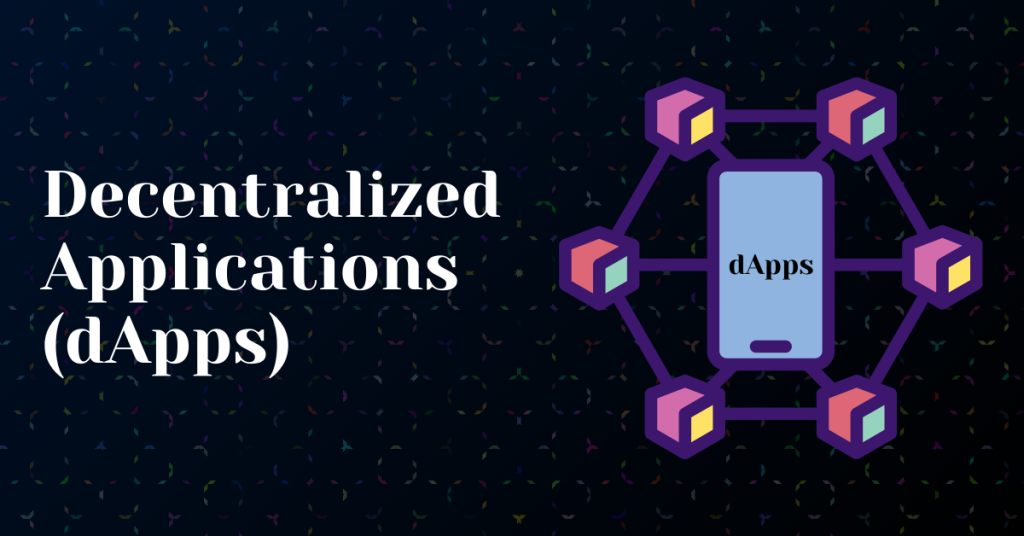
The evolution of Web 3.0 will change web development trends in 2025, which will focus on decentralization and user control. Web 3.0 applications do not maintain control and retention of data from their users, unlike common platforms, which retain user information to a large extent.
This move is centered around decentralized applications (dApps) that use blockchain for encrypted data storage. With decentralized hosting, there is no need to rely on centralized server infrastructure, which means there is less risk of hacks or service interruptions. Creating a user-centric design transforms how users engage with online platforms.
The most recent features from blockchain integration, peer-to-peer networking, and improved user interfaces provide an easy-to-use interface that makes it highly secure. As Web 3.0 gains traction, decentralized approaches will continue to lead in web development trends.
8. Augmented reality (AR) and Virtual reality (VR)
AR and VR are turning out to be significant trends in web development that we can see ahead of us by 2025. Providing immersive and interactive experiences on websites, these technologies change the way users interact with content. In e-commerce, AR allows users to check out products virtually by trying them on.
E-commerce brands like IKEA and Wayfair let customers visualize products in their own homes using AR.
VR is also used to enhance the real estate industry through virtual property tours so buyers can narrow their search results without visiting a location. VR support is added to entertainment platforms to improve user interaction and make the environment way too different.
Developers require frameworks such as AR.js or A-Frame to incorporate AR/VR features. Optimizing these features to ensure they are properly optimized for different screens and performance levels is crucial to providing a seamless experience.
9. Dark Mode and Other UI Design Trends
One of the most popular web development trends in 2025 is going to be dark mode. It creates a more comfortable user experience by decreasing eye strain, especially in low-light areas. It also saves battery life on mobile devices, making it both practical and visually appealing.
2025 will have its own set of impactful UI design trends, such as micro-animations, 3D visuals, minimalism, etc. In the form of micro-animations, motion guides users’ attention and provides engaging interaction. Depth and realism—3D visuals can make websites more interesting. Minimalism unclutters an interface by maintaining simplicity and neatness.
These must be balanced and incorporate both the worlds of style/look, feel, and usability throughout. By picking matching techniques and colors, developers create visual consistency that ultimately increases site attraction. These UI trends improve users’ experiences and define web development trends in 2025.
Dark Mode is trendy on platforms like Twitter, book reading and news websites, and Google Chrome. Dark mode lowers eye strain for users in dark environments by providing a visually comfortable experience that does not overload brightness.
10. Advanced API Integrations And Data-Driven Applications
APIs will be a key part of web development in 2025. They help transfer required data between multiple applications. APIs simplify methods or tools that enable programmers to link web services easily. For example, APIs help developers connect platforms and integrate behavior among different software. One example is that social media APIs offer real-time feeds from any major or minor social network, which can increase user interaction.
Platforms like Zapier leverage API integrations to allow apps to communicate, automating workflows across different software.
Similarly, payment gateway APIs allow smoother and safer transactions within the web, which is a must in e-commerce.
AIl APIs work great for providing integration features, such as chatbots, image recognizers, or personalized recommendations. As a result, developers can build user-centric applications that are data-driven at their heart. Websites with APIs become interactive and provide personalized, appealing experiences.
11. Web Development: The Sustainable Way (for Earth and Developer)
Sustainable web development will now become a mainstream trend in 2025. Due to the growth in environmental awareness, many developers and companies are now conscious in terms of green work practices. This trend ranges from design decisions to server hosting and is about appealing to the digital carbon footprints.
Sustainable web development focuses on minimizing energy consumption during site usage. The energy cost of hosting heavy images, overusing animations, and large video files is immense. Making websites more efficient will reduce the waste of resources on the environment. Simple design layouts with fewer images also aid in faster page loading times, which means lower server power usage.
Green hosting is another crucial feature. These days, many hosting providers are offering services that depend on energy from renewable sources. Providers like GreenGeeks and Kualo use wind and solar power to support sustainable web hosting. Companies that choose these providers can significantly reduce the overall carbon emissions produced by their websites.
Developers can also optimize coding to make sites more sustainable. Code cleanliness, improved caching, and fewer server requests have been suggested as potential means of decreasing energy consumption. One example is using CSS instead of JavaScript animations, which reduces processing power. Doing so is good both for the planet (eco-friendly) and its performance.
Eco-friendly brands such as Ecosia and Patagonia are taking the lead in sustainable web development. For instance, Ecosia uses the revenue generated from ads to plant trees and hosts its search engine on green hosting. Patagonia’s website is deliberately minimal in order to conserve energy and limit data transfer. These innovations were defined by the new paradigms instilled within them, and these companies lead by example in actively lowering their digital footprint.
What Skills Will Developers Need in 2025?
In 2025, developers need a modern skill set to stay competitive in the evolving web landscape. Proficiency in AI is crucial as it increasingly powers automation and personalization in web development. AI skills are vital in a world where more and more web development is powered by automation. Experienced AI developers can find tools that eliminate code generation, data analysis, and user experience optimization.
Understanding Web 3.0 and its principles is also essential. As Decentralized applications (dApps) and blockchain technologies grow, developers need to know how to develop within these structures. Web 3.0 learning allows web developers to build security, user-focused, and data-protected digital solutions.
In this new world, cybersecurity expertise is the top priority. Due to expanding cyber threats, the next big skills for developers are encryption, two-factor authentication, and general secure coding. You will learn about cybersecurity, which secures websites and user data in compliance with rising government regulations, e.g., GDPR or CCPA.
Conclusion
Web development is going to adopt some really interesting innovations all the way toward 2025 that will change the way users interact within the digital world. Some such new developments are — AI-driven development, low-code/no-code platforms, and Progressive Web Apps (PWAs) for more personalized and seamless app development and high-performing experience. In addition, voice search AI and decentralized applications (dApps) are the two most important trends that will change how users interact with the web, making everything more intuitive and secure. Keeping an eye on these trends is going to be a crucial part of serving users with next-level, efficient, and secure digital solutions.
At Deftsoft, we are committed to keeping businesses updated with these technological innovations. We provide customer-centric web applications using the latest trends. Our expert developers can offer you high-performance web apps, an e-commerce platform, a Progressive Web App, or SaaS solutions! From UI/UX designs to strong backend development, we follow a comprehensive approach to ensure your project is delivered on time. Our clients are spread across various industries, including E-Commerce, Healthcare, Logistics, Retail, Finance, Game and Sports, Real Estate, Travel etc. Deftsoft is your partner in building scalable, secure, and immersive web experiences that fuel business growth with 19 years of industry experience. Contact us today, and let us help you evolve your digital expertise to the next level.
FAQs:
1. What are some of the most exciting web development trends to expect in 2025?
In 2025, we can expect trends like AI-driven development, the rise of low-code/no-code platforms, Progressive Web Applications (PWAs), enhanced cybersecurity measures, and Augmented Reality (AR) integration. These innovations are set to make web development more efficient, interactive, and secure.
2. What is the future of web development in 2025?
The future of web development in 2025 will feature Virtual reality (VR), Dark Mode, Advanced API Integrations & more. Technologies like AR/VR will enhance user experiences while heightened cybersecurity measures address evolving threats. This evolution aims to create faster, more interactive, and secure digital experiences across industries.
3. Will low-code and no-code platforms replace traditional web development?
Low-code and no-code platforms will empower more people to build websites and apps, but they’re unlikely to replace traditional development fully. Instead, these platforms will complement traditional methods, allowing developers to focus on more complex, custom features while reducing time spent on repetitive tasks.
4. How will Artificial Intelligence (AI) impact web development in the future?
AI will play a crucial role in automating code generation, improving user experiences through personalized recommendations, and enhancing website accessibility. AI-driven tools will also help developers quickly identify and fix issues, reducing development time and improving website performance.
